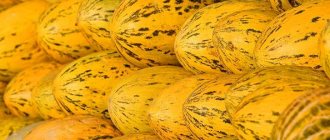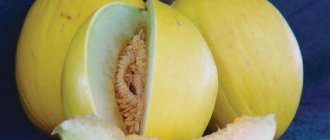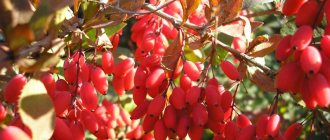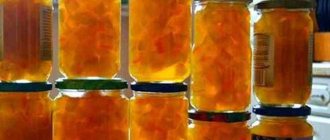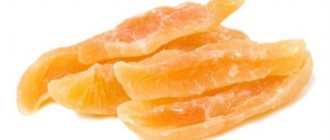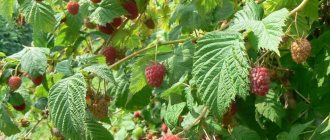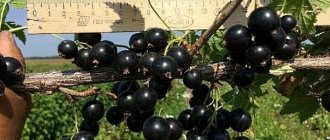Description of the melon variety
Gulyabi melon loves sunlight, warmth, and is not afraid of drought. High air and soil humidity are detrimental to the plant. Therefore, Central Asia is the most favorable region for growing melons.
Gulyabi also has a name: Chardzhuyskaya, Chardzhouskaya - after the name of the region in Turkmenistan, Alien and Chunzhuyskaya - after the names of the Central Asian villages - Chu, Chundzha.
Gulyabi melons are grown in Uzbekistan, Turkmenistan, Kazakhstan, and in Russia - in the Astrakhan region. Chardjui melon hybrids that are resistant to difficult weather conditions have been bred for cultivation in the middle zone. Their weight reaches only three kilograms. Whereas in the southern regions the average weight of the Charju fruit is from 4 to 5 kg.
It takes Chongrui fruit 133 days to reach full maturity. At this point, Gulyabi accumulates about 9% sugar, which gives it the opportunity to compete even with sugar cane. White pulp, juicy, aromatic, becomes a favorite dessert for many people.
The rind of the Charjui fruit is yellow, orange, white or light green. Some of them have small wrinkles or a mesh pattern on the surface. It all depends on the variety.
The fruits of Chardzhou melons are shaped like an egg.
Most varietal species are well stored and transported. The longer the pumpkin is stored, the sweeter and more flavorful it becomes.
Distinctive features
The Charju fruit has a competitor - the Torpedo melon from Uzbekistan. They are often confused. But the difference between Gulyabi and Torpedo melons is obvious.
- Representatives of both varieties are shaped like an oval. But the Torpedo is more elongated, reminiscent of the military projectile of the same name - hence its name.
- The yellow skin of the Chardzhou pumpkin is brighter than the light yellow Torpedoes. The Uzbek has longitudinal light green stripes.
- The wrinkled or mesh pattern on the surface of the Charjui melon is not similar to the dense gray mesh of its competitor.
- The excellent taste of the fruit characterizes both varieties. But they differ in shades: Gulyabi melon has honey-like flesh, while Torpeda has a vanilla flavor.
- Melon crops vary in size. Torpedo is a larger variety, some fruits reach 15 kilograms.
- The ripening periods of the varieties are different: for Torpedo it is shorter - no more than one hundred days, while Chunjui will require at least four and a half months for the growing season. Therefore, Torpedo can be grown in temperate climates.
- In addition to excellent taste, sweet fruits have one more common feature: good keeping quality.
Characteristics
Gulyabi melon is characterized by high yield: from one square meter you can get more than 12 kg of tasty product.
Chardzhou melon belongs to the autumn-winter varieties, therefore it is well stored: from one to three months, and the green varieties last until spring.
Thanks to its dense peel, Chongru dessert can be transported over long distances. This makes it possible to try Gulyabi honey melon far beyond the borders of Central Asia and the outskirts of Astrakhan.
The disadvantages of the variety are its demanding climate: Gulyabi will not grow without heat, sun, or in high humidity.
How to understand the variety of varieties
The first feature that made it possible to grow melons was the ripening time:
- ultra-early ripening, hybrid with ripening in less than 60 days;
- early ripening, ripening in 60-70 days and sugar content. from 8 to 15%;
- mid-ripening, they ripen in 75-100 days, they contain 14-15% sugar;
- autumn-winter, ripen in 95-100 days, very sweet, long-lasting, large;
- winter, huge, weighing up to 30 kg, sugar up to 16%, but stored well in a cool room;
The shape of melons is ellipsoidal, spherical and elongated like skittles. The upper part can be smooth, mesh or ribbed. The fruit pulp is crispy, white, yellow or greenish. In some varieties, during storage, the flesh gradually turns from green to yellow.
There are several subspecies of melons. It is generally accepted that fruits grown in Central Asia are the most delicious. But among them, the Uzbek melon is the most popular. This is facilitated by the composition of the soil and the warm period without frost, ranging from 193 to 273 days a year.
European varieties were obtained later; these are mainly early-ripening and ultra-early-ripening hybrids, most obtained using the Cantaloupe variety. Currently, European hybrids reach a sugar content of up to 15% with a ripening period of 55 days from the ovary.
What varieties exist
Chardzhui melon has several varieties.
- Chock. The peel is orange, soft. The pulp is thick, with a viscous taste.
- Gulyabi-803. The peel is bright yellow, durable. The pulp is white, tender, crispy, sweet.
- Chardzhou or green. The peel is smooth, without a pattern. The pulp is soft and juicy.
- Bosvaldi. The peel is greenish in color, with wrinkles and dark stripes. The pulp is small, loose, oily, with fibers. They don't last long.
- Sary-Gulyabi. The peel is yellow, orange, coarsely mesh. The pulp is oily, aromatic, sugary, juicy.
Positive traits
Also check out these articles
- Medinilla flower
- Juice press
- How to water cucumbers
- The best varieties of cherry tomatoes with descriptions and photos
Gulyabi melons are very popular. This variety is valued by buyers in different countries and gardeners. What are her positive qualities?
Gulyabi orange
- The yield is stable if you approach cultivation correctly. 10-14 kg of fruits are collected per square meter.
- Due to the density of the Gulyabi melon peel, it can be easily transported over long distances. Fruits from Uzbekistan are annually imported to Russia, Ukraine and many other countries. Only the Bosvaldi subspecies is rarely transported.
- The shelf life is 1-3 months depending on the place of cultivation and the condition of the fruit. Green Gulyabi can generally be stored all winter and spring without losing its taste.
- With long-term storage, the taste will only improve.
The disadvantages of Gulyabi melon are related to its cultivation. It does not grow as well in greenhouses as it does in cool climates. Fruits need plenty of sunlight and heat to ripen.
How to choose Gulyabi melon
To sniff. Ripe Chardzhou fruit has a rich, honey smell.
Inspect. The uniform color of the Gulyabi melon rind will indicate a quality product. The stalk should be thick, but dry.
Clap. When patting a ripe Chongru fruit, a dull sound is heard.
Touch. The peel of ripe Gulyabi melon is soft and can be easily removed with a fingernail. The place where the flower was is slightly dented.
An overripe Chardjui fruit will have a too soft crust, on which fingerprints remain. This melon will not be stored - it must be eaten immediately.
Unripe pumpkin will ripen: to do this, it must be placed in a dry, ventilated place.
It is better not to buy fruits near the road, because they absorb toxins and become covered with dust.
Why do you dream of a melon in a dream?
If a melon in reality brings only benefits, then seeing it in a dream is not always good. Usually a melon in a dream is an omen of the onset of some illness or major material loss.
- If a woman dreams of a melon, then this is interpreted as the occurrence of ailments or the beginning of a dark streak in life.
- If you dream that you are eating melon in a dream, this means that you may soon get sick.
- A ripe melon dreams of success and fulfillment of desires.
- Dreaming of buying a melon at the market means wasting your talents.
It’s up to you to believe in such dreams or not, but if you are still afraid that they will come true, then simply take into account the warning from above and do everything to avoid future problems. And most importantly, remember that we ourselves are the builders of our own destiny and can adjust it the way we want, especially if the universe gives competent advice in this direction
And most importantly, remember that we ourselves are the builders of our own destiny and can adjust it the way we want, especially if the universe gives competent advice in this direction.
Beneficial properties and harm
Chardzhou Gulyabi is full of useful elements. 90% of its composition is water. Melon is rich in iron, zinc, potassium, calcium, sodium, silicon, magnesium, phosphorus. The fruit is a real vitamin cocktail. It contains about 20% ascorbic acid (vitamin C). In terms of beta-carotene content, which turns into vitamin A after consumption, melon is superior to carrots. Sweet Charjuy pumpkin is rich in vitamins B, E, P, glucose, and healthy acids. It contains fiber and starch.
The Gulyabi melon fruit has a beneficial effect on the functioning of the stomach and intestines, normalizes the activity of the nervous system and brain, and strengthens the immune system. Improves the condition of skin, hair, nails. Charjui melon is useful for diseases of the heart and blood vessels, increased stress on the liver and kidneys, low hemoglobin, gout, and rheumatism.
The complex of vitamins contained in Gulyabi has a positive effect on the formation of endorphin - one of the hormones of joy and happiness. Therefore, regular consumption of aromatic fruit improves mood and stabilizes emotions.
The ability of Chardzhou melon to be stored for a long time makes it possible to stock up on it for future use and use it in the fall and winter.
Gulyabi also has a number of contraindications. It can harm people suffering from diabetes, stomach and duodenal ulcers, allergic reactions, and lipid metabolism disorders.
Calorie content of Gulyabi melon
Chardjui melon contains only 35 to 50 kcal per 100 grams of product: calorie content depends on the variety.
Chunju Gulyabi, saturated with natural sugars, completely satisfies a person’s need for sweets, suppresses the feeling of hunger, and at the same time helps to lose excess weight.
Product Reviews
Turkmen melons are considered one of the best types in the world. Their qualities and advantages cannot be overestimated. Just how much is one Gulyabi melon worth! Reviews about this variety are always only the most positive. The fragrant beauty is well known outside her native country. The Gulyabi variety is an autumn-winter variety, so this melon has excellent keeping quality. This allows you to store it for a long time or transport it over long distances. Nowadays, not a single resident of even the most northern regions will be surprised to see a bright yellow ovoid fruit on the store counter. Perhaps this is why many people imagine a real melon this way. And eating it is a great pleasure. It's easy to do. You just need to cut the fruit into slices with a sharp knife. Then everyone does as he likes: some bite off the pulp with their teeth, while others first separate it from the skin, and then eat it with a fork or spoon.
In any case, the tender, juicy and aromatic pulp cannot leave anyone indifferent. This is not only a wonderful dessert, but also a wonderful mood lifter. Melon juice stimulates the formation of endorphins in the human body, which help overcome the blues and cope with depression.
Gulyabi melon is a juicy, aromatic and very healthy variety, which is recommended to be given to children from 1 month of age. Melon was bred in Turkmenistan, so it is not suitable for growing in regions with an unstable climate. In the East, this crop is called “Chardzhou melon”; thanks to the work of breeders, 5 varieties with sweet, aromatic fruits and a lot of vitamins have been developed.
Growing and care
The capricious Gulyabi variety is not easy to grow. In greenhouses, Chardzhou fruits do not receive the required amount of sunlight, which affects the taste. It is possible to grow Gulyabi melon in open ground in the southern regions of Russia due to the length of the growing season. But Chongru pumpkin, grown on your own plot, will delight you with tasty and healthy fruits.
- The seedling method of growing Gulyabi is preferable. Seedlings must be obtained from three-year-old seeds, otherwise they will be barren. The seeds are first soaked in a damp cloth in a warm place for several days.
- After germination, the seeds of the Charju melon are planted in different containers. The soil for seedlings should be nutritious, but not heavy.
- After germination, Gulyabi seedlings are placed in an area where there is a lot of sun and no drafts. The soil should be loose, sandy, fertilized with potassium, nitrogen, and phosphorus. The distance between the bushes is at least 70 cm. In this case, the soil temperature should be at least 13 degrees, and the air temperature should be 17 degrees or more. Gulyabi should not be planted after carrots and pumpkins. It grows well after legumes, nightshades, onions, and garlic.
- Gulyabi is watered rarely, no more than 2-3 times a week. For irrigation use only warm water. They shed it between the rows, not the roots and green shoots. To increase the sugar content of Gulyabi fruits, watering stops during the period of ripening of sweet fruits.
- Chardzhou melons are fed three times. The first fertilizing is done a week after planting with ammonium nitrate. The second - during the formation of buds, with organic fertilizers. The third - during the period of active growth of ovaries, with phosphorus and potassium fertilizers.
- To avoid excess greenery on the Chardzhou melon, it needs to be shaped: leave three side shoots, pinch out the rest, and limit the growth of the main shoot. It is also better to remove excess ovaries, otherwise the melon crop will not have enough strength, and the gulabi fruits will be small or unripe.
- You only need to loosen the soil between the rows until the leaves close.
- Gulyabi should be harvested after the end of the growing season.
Pros and cons of melon
So, let's briefly highlight the main positive characteristics of Gulyabi melon:
- Low calorie. It is known that melon is almost 90% water. Thus, when consuming it, your body will be able to quickly get enough.
- Availability of vitamins and minerals. This product contains a large number of useful substances and microelements: vitamins (C, A, B, E), amino acids, fiber, etc.
- Medicinal properties. Melon is an excellent natural ingredient that can cope with various diseases: insomnia, gastrointestinal problems, kidney disease, depression, etc.
In addition, melon is often used in cooking to make delicious and healthy desserts.
Despite the invaluable benefits that melon brings to the body, it is worth noting its main disadvantages:
- laxative effect;
- allergic reaction;
- the likelihood of containing nitrates and toxic compounds.
Having determined the main pros and cons of the product, we can draw conclusions that by consuming a small amount of melon you can enrich your body with various beneficial elements. But do not forget about precautions when choosing this product.
Harvesting and application
Gulyabi melon is harvested at the end of summer - beginning of autumn, as it is a late variety. Chardzhou fruits begin to smell like honey, the tail dries out, the place where the flower was becomes soft, and when tapped the melon makes a dull sound.
Melon is good as an independent product. It is used to prepare delicious desserts, make a filling for baked goods, and add it to salads, soups and main courses. Gulyabi is delicious in dried or dried form, in the form of jam, jelly. The juice from the Chardju variety is wonderful. The seeds are used to produce vegetable oil, thick and healthy, like olive oil.
Reviews from those who grew
extremely positive reviews about this melon variety online :
Ivan, Astana : “I can call Gulyabi melon my favorite variety. I fell in love with melon for its juicy, honey-sweet and aromatic pulp. Gulyabi has one important feature - after harvesting, the fruits must lie at room temperature for 4-6 days. During this time, the taste of the melon will become sweeter. The Gulyabi variety is unpretentious in agricultural technology.”
Svetlana, Simferopol : “I have been growing Gulyabi melon in my garden for 3 years now. This melon crop is unpretentious. The fruits ripen by mid-September and look like the photos on the Internet. I liked the variety for its juicy and aromatic pulp. Gulyabi melon has good keeping quality. The harvested crop can last until the beginning of spring, thanks to which the juicy melon can be enjoyed throughout the winter.”
Diseases and pests
| Ascochyta blight Signs: Occurs in greenhouses due to high humidity. First the stems turn brown, then the leaves. Prevention and control : maintaining normal humidity, treating with fungicides in case of damage | |
| Powdery mildew Signs: white coating on leaves and stems. Prevention and control : carry out weeding, maintain normal humidity. Treat with fungicides if affected |
